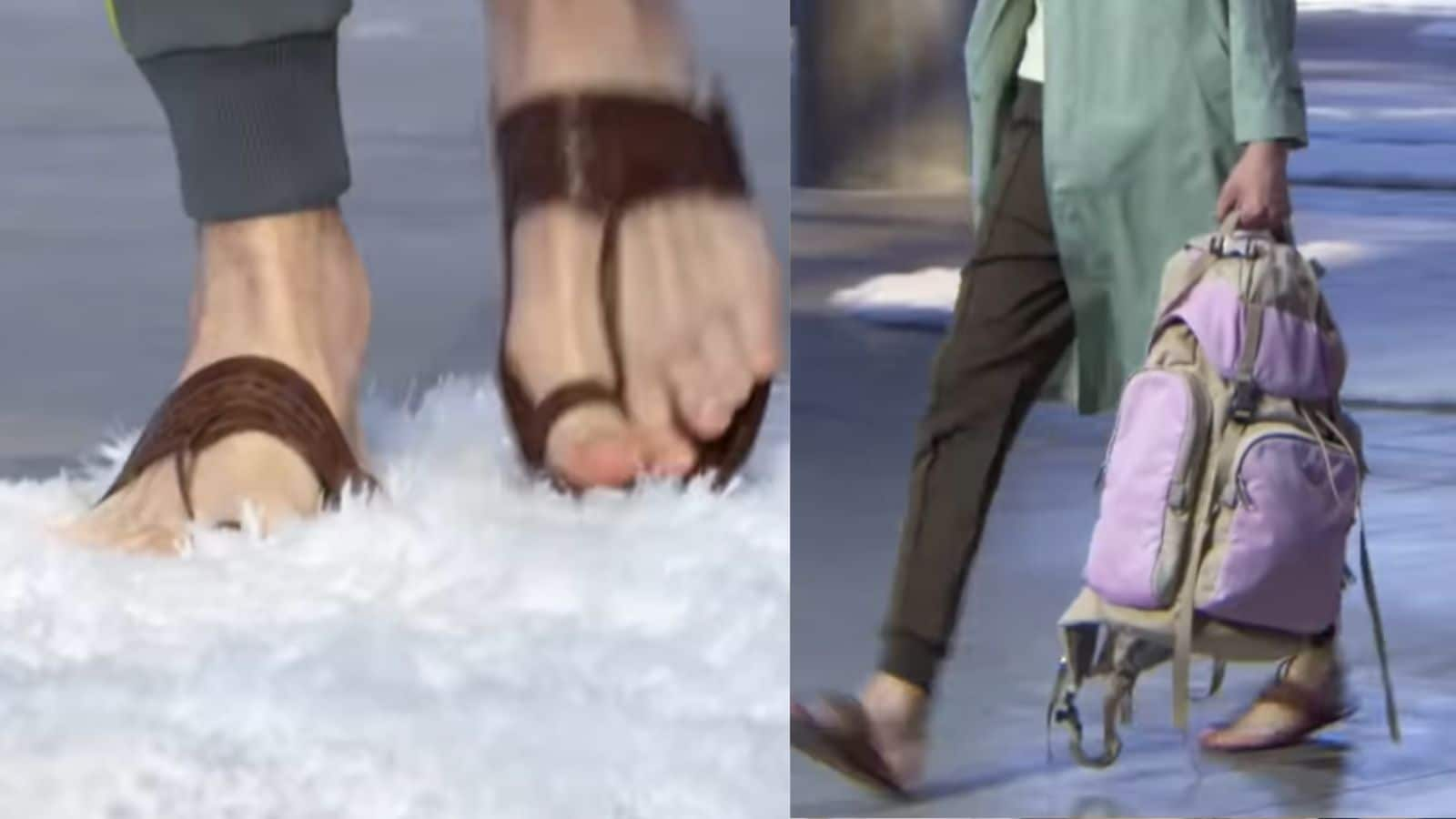What was designed centuries ago for the comfort of people in the sweltering climate of rural Maharashtra has now stepped onto the global fashion stage. In a bookmark-worthy moment for Indian artisanal fashion, the Spring/Summer 2026 menswear show of Prada in Milan saw models walking down the runway in none other than the traditional Kolhapuri chappals.
Presented at the Deposito of the Fondazione Prada, the handmade leather sandals were styled with contemporary outfits, giving the humble Kolhapuri a glamorous makeover while staying true to its traditional roots.
Meticulously handcrafted by skilled artisans, Kolhapuris are a legacy of craftsmanship passed down through generations. These chappals have long held a cherished place in Indian wardrobes, and they’re now winning hearts among designers, celebrities, and influencers worldwide.
As luxury brands and style icons embrace the Kolhapuri, let us dive into its rich history that is handmade with heart.
What Are Kolhapuri Chappals?
Originating from Kolhapur, Maharashtra, Kolhapuri chappals date back to the 13th century under King Bijjala and his minister Basavanna’s rule. Made entirely by hand using vegetable-tanned leather, these chappals are known for their flat sole, durability, comfort, and intricate designs. These t-strap open-heel sandals have been crafted by talented Indian artisans for over a century.
Kolhapuri chappals are handcrafted from sun-dried buffalo or cowhide, tanned naturally using vegetable dyes over 3–6 weeks. Artisans then cut, shape, stitch, and decorate the leather using just their hands. Making a single pair of the chappals takes 3 to 15 days, with final oiling and polishing for durability and comfort depending on the complexity.
Notably, the leather used in these Chappals is often tanned using natural, eco-friendly processes, which makes them not only stylish but also eco-conscious footwear.
During the reign of the Maratha Empire, the footwear gained royal patronage, where they became popular among warriors and noblemen. In the 1970s, the Kolhapuri chappal stepped into the West’s counterculture wardrobe and was carried along by the freewheeling spirit of the hippie movement.
Over time, the Kolhapuri has undergone major transformations, with artisans crafting it in different colour variants, lighter soles and even metallic finishes. But its original form never went out of style and is still worn by several people worldwide.
Kolhapuri chappals are also referred to by different names depending upon the place they were manufactured. Some places include Kapashi, Kachkadi, Paytaan, Bakkalnali, and Pukari.
Kolhapuri chappals: Interesting Facts
These chappals were granted a Geographical Indication (GI) tag in July 2019, meaning they are officially recognised as unique to Kolhapur.
Authentic Kolhapuris are made with 100 per cent leather, often from cow or buffalo hides.
The leather chappals are designed to absorb heat, keep the wearer’s feet cool, and gradually mould to the foot, making it more comfortable over time.
It takes around 3 to 15 days to make a pair of Kolhapuri chappals, with final oiling and polishing for durability and comfort.
These handcrafted chappals usually come with a price tag ranging from Rs 500 to Rs 3000.
